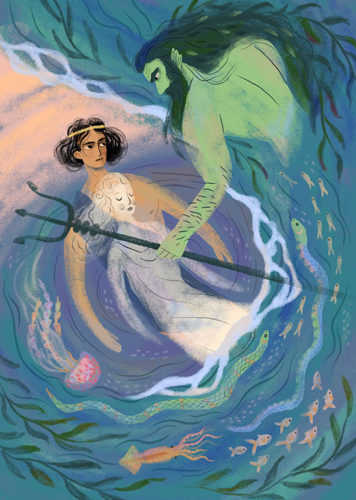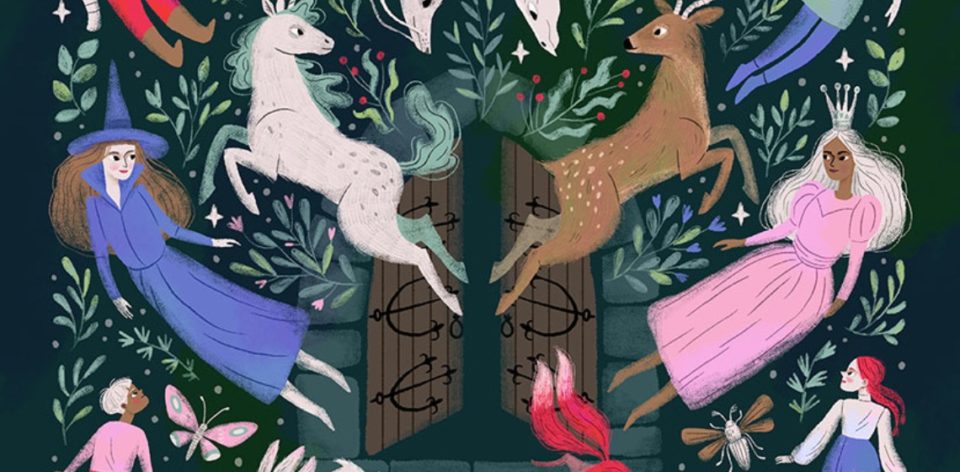While making the anthology of fables, the publisher, Labrisz Lesbian Association, feared that it would be difficult to get the word out to people. Thanks to the government party media, especially Dóra Dúró’s tenacious “book grinding”, the volume took off so well that a second round has already been published. Today Meseország Mindenkié (A Fairy Tale for Everyone) hardly needs to be introduced, because it’s constantly been in the news since its release.
First of all, the anthology appeared in the media because opponents of the book branded it as “hormone therapy” and LGBTQ+ propaganda which confuses children—in short, it makes lesbians, gays, and trans out of them, which would be blow to society.
The book also includes dwarves, which in many tales are the heroes and role models for everyone. What a blow it would be if all of us who heard their story became dwarves! Just imagine, we could type just by jumping on the keyboard! We would be exhausted after a short email, this way we could never finish a conversation—there would never be another national consultation! But that’s not what the opponents of the book are roaring about, because according to them, this is an LGBTQ+ publication.

The truth is that there are 17 stories in the volume of which the common feature is not an LGBTQ+ motif, but rather diversity. The point was to make stories where there are protagonists who are not represented in classic stories. The Roma, homeless, adopted, outcast, poor, and weak can be heros too. Girls and boys alike. Because there’s more than one type of hero. Girls can be brave and become great warriors, while boys can be sensitive and chronicle the heroic deeds of others.
The tales in the volume also point out that there isn’t only one type of relationship. In the majority of classic stories we read that the prince comes and saves the princess and then they get married and live happily ever after. We all know that isn’t true. In fact, it’s harmful because it nurtures false expectations in children, and not because there are few princes these days. The tales in the volume emphasize that relationships are as diverse as people. In the stories, there are characters who get married and those who don’t. There are those who are in happy relationships and those who aren’t. There are those who choose same sex partners and those who don’t.

To finish, here are a few words about the “LGBTQ+ Propaganda”.
As far as “propaganda” is concerned, tales don’t want to and can’t change or convince anyone. Tales are a canvas in which everyone sees their own story. The goal of tales is to start a conversation. Next to every fairytale read there should be an adult who is ready to answer children’s questions. (Personally, when I was a child, I didn’t understand the story of the Prodigal Son, although it’s in a book whose authenticity and usefulness is beyond doubt these days—still, without the help of an adult it confused me.)
It’s not scary and traumatic when we hear a story, but rather when we can’t talk about it.
As far as the “LGBTQ+”, especially the “trans” part, is concerned, in my opinion, these few stories weren’t even about being trans. In the first story (Ruby-red bird, “Rubintpiros madár”) Kainisz, the princess, asks Poseidon not to be a girl anymore directly after being raped (which is presented in a very nuanced way for children). She says to Poseidon, “Make it so that I’m not a woman anymore!...So that I’ll be so strong that I’ll never be attacked, pushed around, or wounded by any man!” In another tale (The antler of the deer, “Az őzike agancsa”), on the other hand, Koni doesn’t want to be a doe (female deer) anymore, because she can’t play with her friends—because games and fighting are only the privilege of the stags (male deer). In my opinion, these stories aren’t about being trans or about gender transitions, but rather a social criticism that gender roles are still very restrictive, especially for girls.
Already in childhood, we have to talk about these things too and the fairytales from Meseország (A Fairy Tale for Everyone) are suitable to start such a—often not simple, but vital—discussion. My life would have been easier if there had been such books and such discussions that could have made me believe at a young age that even though I was born a girl I didn’t have to do more or be better than my brothers in order to be “good enough”.
Since then, as a teacher, one of my main goals has been to tell such stories to my students. Some of them are fairy tales and some of them are real-life stories—the point is what they get out of them. Our job is to help them become heroes of their own stories.
Translated by Amy Soto

